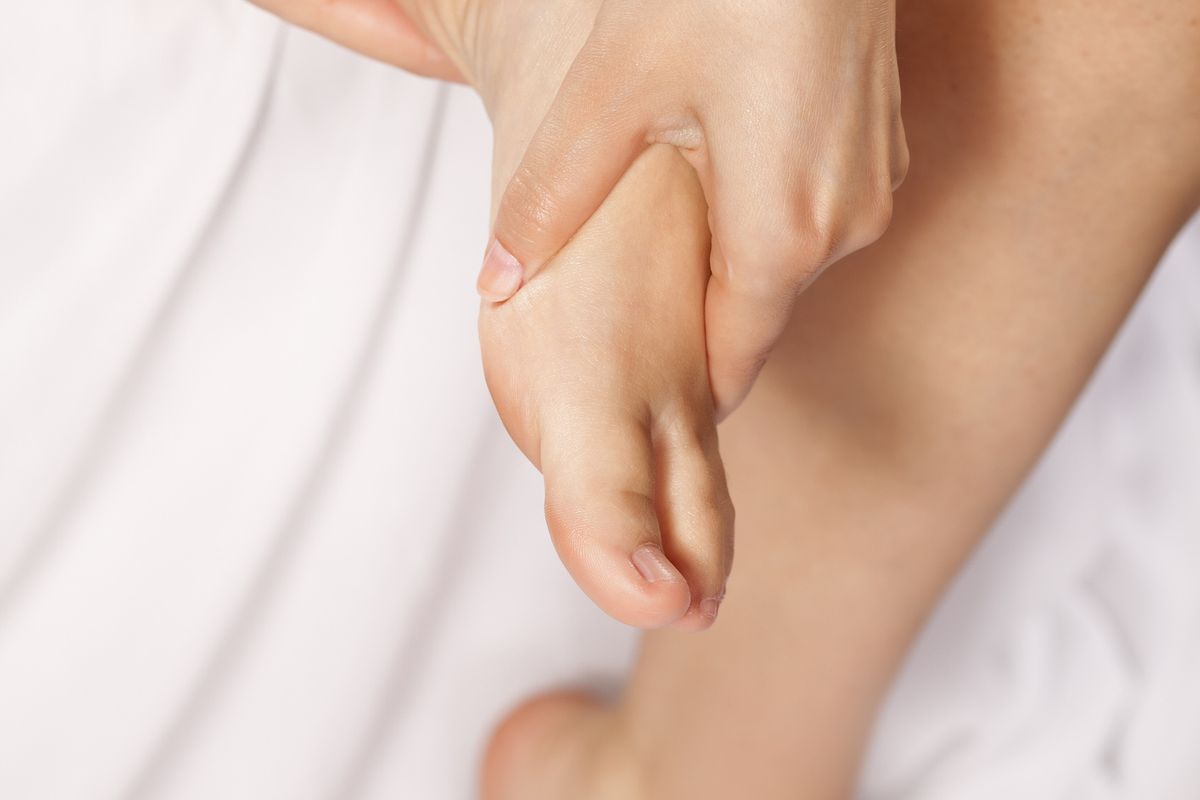
Snow and cold make January a rough time for teachers who need their feet to be limber and warm, especially after a few weeks off. Karin Ellis-Wentz, head of pre-professional programs at the Joffrey Academy of Dance in Chicago, always feels the difference after vacation. “One winter break, I did TheraBand exercises,” she says. “It helped to keep my feet, ankles and calves in shape, so I wasn’t cramping terribly when I came back to teaching again.”
Whether you’ve cross-trained over the break or not, returning to class means long days of teaching, demonstrating and standing that can be especially rough on your feet and lower legs. To remind you to treat your feet well, we asked the experts for their most current thinking on how to best prepare and protect your most-used body part.
Warm Up Appropriately
Physical therapist Sean P. Gallagher says point-and-flex TheraBand exercises are good, but they aren’t enough to prepare your feet for a day of load bearing. “TheraBands are like five pounds of resistance, but when you go up into relevé, that’s a lot more than five pounds,” he says. Instead, he suggests running through a condensed version of the warm-up you’ll teach students. Going through a shortened barre, for example, not only gets your feet feeling the floor and your muscles working the way you’ll use them, but it helps you go over your lesson plan before you begin, he says. It also helps you practice the coordination you’ll need to dance.
Customize Your Routine
Regardless of your specific warm-up, Elizabeth Maples, doctor of physical therapy at Miami City Ballet, recommends some light cardio movement of choice to begin, like 30 minutes of yoga, Gyrotonic or using an elliptical machine. After that, find what suits your needs. After spraining her ankle in February, Alexa Capareda, rehearsal assistant for Ballet Austin’s second company, incorporated her physical therapy exercises not just into her own warm-up but into what she does with dancers, too. Her routine involves lying on her back and going through a series of foot-scrunching and flexing, individual toe tapping, and winging and sickling with feet on and off the ground. She also stands on one foot on a balance board and alternates slowly touching the front edge and back edge of the board to the floor. “Stabilizing exercises get the little muscles in feet and ankles, but also get yourself aligned in the hips,” Capareda says.
Have the Right Gear
Footwear is a major issue for teachers, since ballet slippers lack the necessary support for a day of standing and walking. Gallagher recommends wearing sneakers but keeping ballet slippers or other soft shoes on hand and changing when you need to demonstrate.
Ellis-Wentz wears Bloch split-sole sneakers when she knows she won’t be demonstrating much or that she’ll be sitting in a cold theater and wants to keep her feet warm. “But when I try to demonstrate petit allégro, I’m tripping over my shoes,” she says. On a dance-heavy day, she’ll opt for Gaynor Minden Joy or Grishko split-sole ballet slippers, both of which she says have padding in the heel.
Maples points out that for some people, split-sole sneakers cause mid-foot dysfunction, and says a full sole may be better for teachers who are standing for long hours. If sliding on marley floors is required, suede can be pressed onto the full sole of a sneaker.
Stay Warm
Ellis-Wentz spends some of her long days sitting at a desk, so she keeps her wooden foot roller on hand and also does doming exercises while she works.
Another exercise you can and should return to throughout the day—while you’re warm—is calf stretches, says Maples. She offers a variation on the standard that involves rolling up a legwarmer or T-shirt and placing it under the back foot along the inside arch, and then along the outside arch, causing the foot to supinate and then pronate gently. If you stretch with a straight and bent back leg with that variation, it stretches more deeply into the fibers of the muscles.
Recovery Is Essential
For Lynn Schwab, who teaches tap four or five days a week up to six hours a day at Steps on Broadway and American Tap Dance Foundation in New York City, recovery is the most vital foot-care component. Schwab ruptured a plantar fascia a few years ago and now puts in extra effort in keeping her Achilles and calf muscles stretched and pampering her feet after a day of heavy tapping. She uses yoga toes to spread out her metatarsals after they’ve been squished in a shoe and rolls out her feet on spiky rubber balls or a wooden roller. She also swears by foot soaks and Epsom-salt baths.
“Recovery is equally important to warm-up for the dancer and teacher,” Maples says. “If teachers can model that before and after class, we will have healthier dancer populations.”




